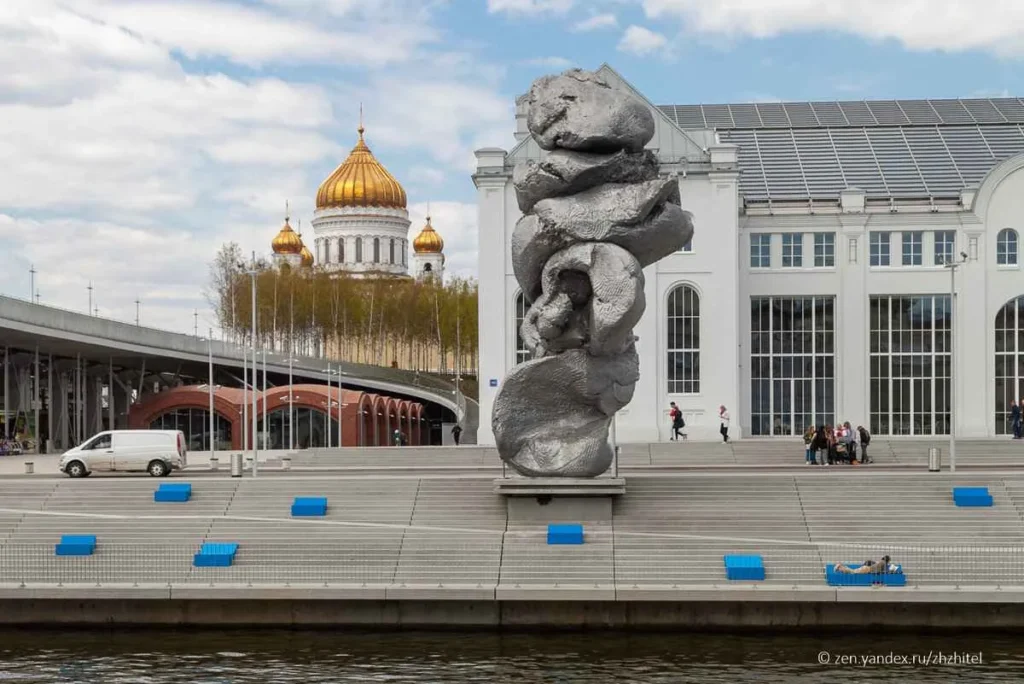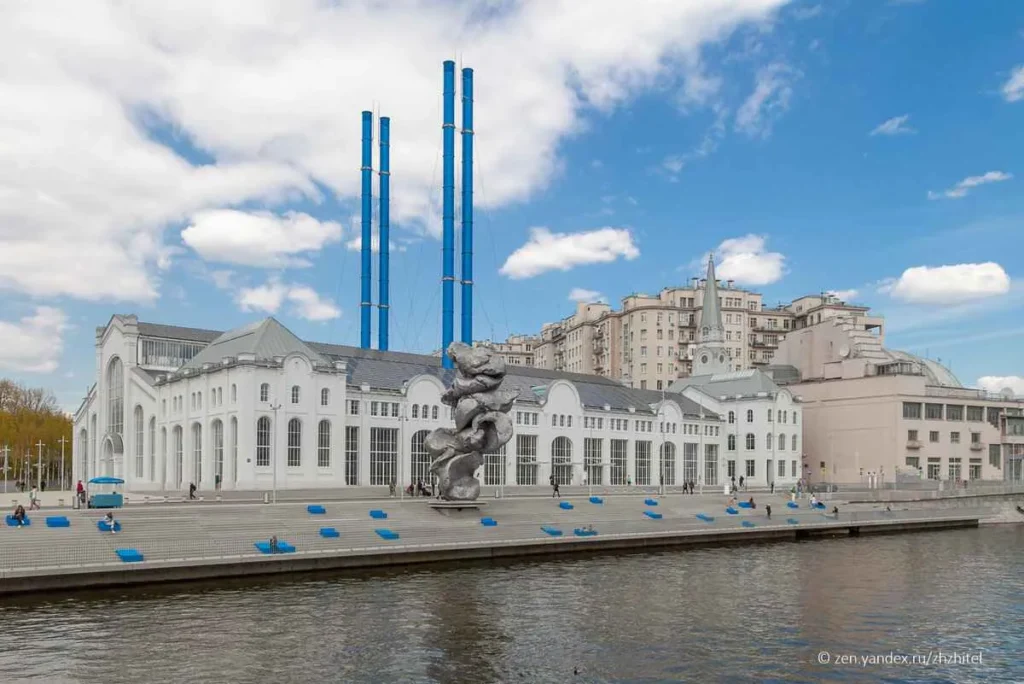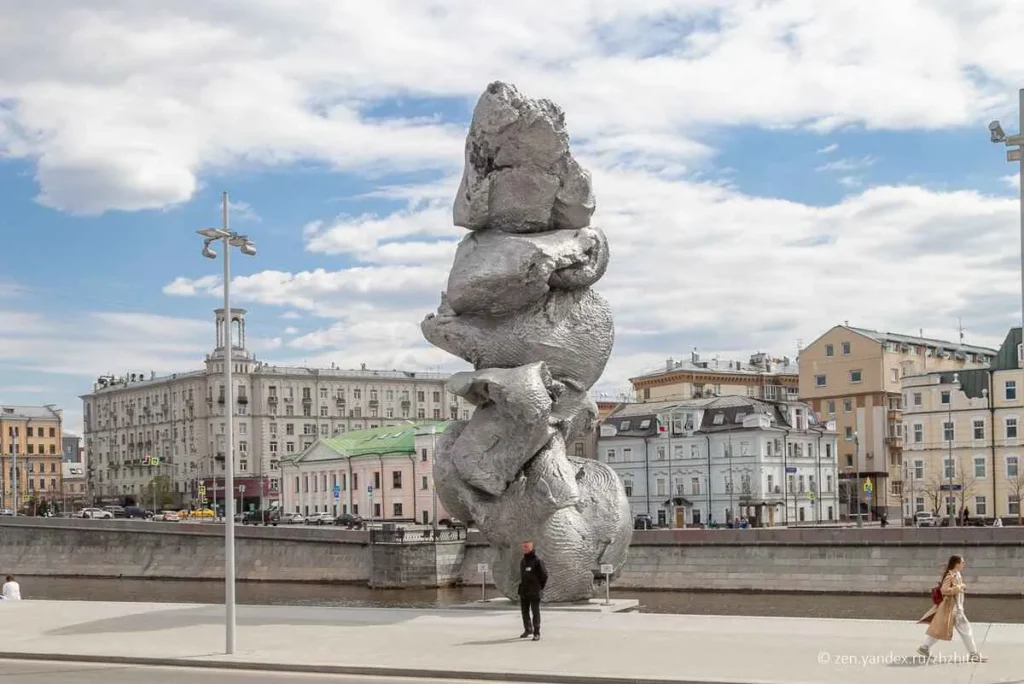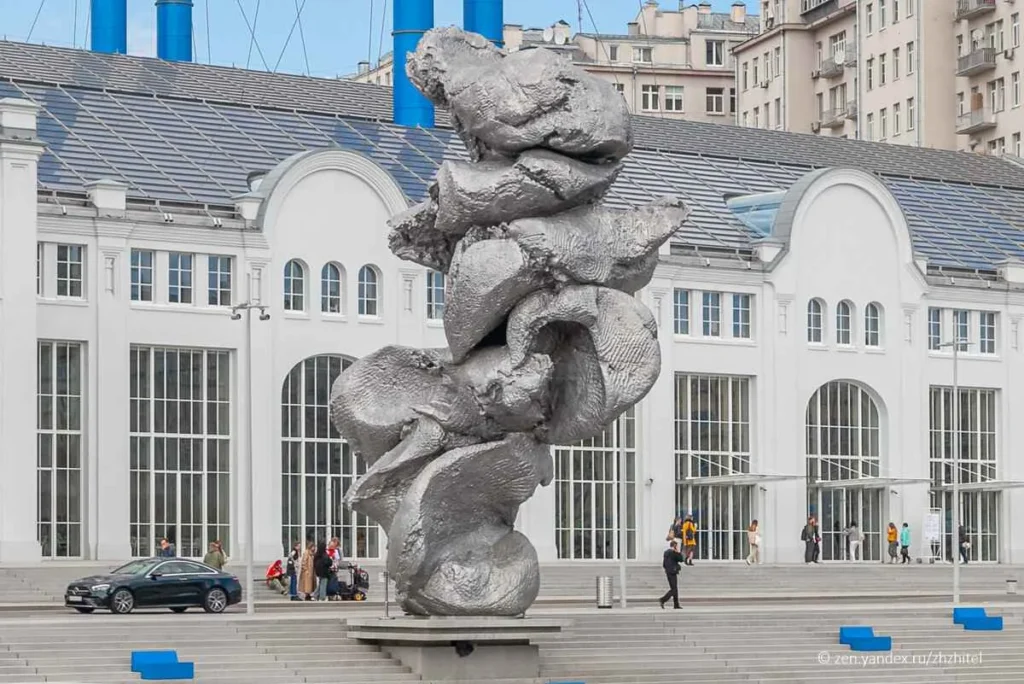In August 2021, a strange figure appeared on the banks of the Moskva River, in the Bolotnaya Naberezhnaya area, sparking a wave of criticism, memes, and debate about the true value of contemporary art. The 13-meter-high sculpture is titled Big Clay No. 4 and is the work of renowned Swiss artist Urs Fischer. Since its installation, it’s been hard to find a Muscovite without an opinion—usually a strong one—about it.
A lump of clay… or something else?
The piece represents a handful of clay molded by hand and then enlarged fifty times. According to its creator, Fischer, it is a metaphor for creation, incompleteness, and malleability: clay as a symbol of human potential and forms yet to be defined. However, the material used is not clay, but molten aluminum, making it even more puzzling to first-time viewers.
Fischer, who previously exhibited the work in cities like New York (2015) and Florence (2017), brought it to Moscow as part of the opening of GES-2, a contemporary art center installed in a restored power plant. Despite the prestige of the event, the sculpture’s reception was, as in previous cities, rather divisive.
Between high art and public mockery
To many Muscovites, Big Clay No. 4 is nothing more than a “pile of garbage,” as humorist Maksim Galkin put it, or even “the most expensive and incomprehensible thing in modern art,” as countless users on social media have echoed. Similar critiques emerged in the U.S., where one art critic called it “the most expensive piece of shit in the art casino.”
Adding to the controversy is the sculpture’s location: from Big Clay, one can see the monument to Peter the Great, a work by Zurab Tsereteli—another highly debated piece that has stirred aesthetic comparisons for years. The proximity has led some tour guides to mistakenly attribute Big Clay No. 4 to Tsereteli, though he had nothing to do with it.
The paradox of art that doesn’t aim to please
In response to the backlash, Urs Fischer has replied with irony and a touch of philosophy. For him, art has no obligation to be “beautiful” or “pleasant,” nor to meet anyone’s expectations. In his own words:
“Cities are full of ugly buildings, ugly cars, and unstylish clothes. Do we talk about those? No. So why should art be any different? Art doesn’t have to make you happy. It just has to exist. If it gets people talking, that’s already something.”
A provocation with no expiration date?
Despite widespread rejection, the sculpture shows no signs of being removed anytime soon. The fact that it is permanently guarded reflects both its symbolic value and its vulnerability in the face of public discontent. Like it or not, Big Clay No. 4 has secured its place in Moscow’s visual landscape and in the collective imagination of its residents.
As with all art that provokes discomfort, its importance may not lie in immediate applause, but in the conversations it sparks. In the case of this bizarre mountain of metallic “clay,” the noise hasn’t stopped—and for Fischer, that alone is art.



